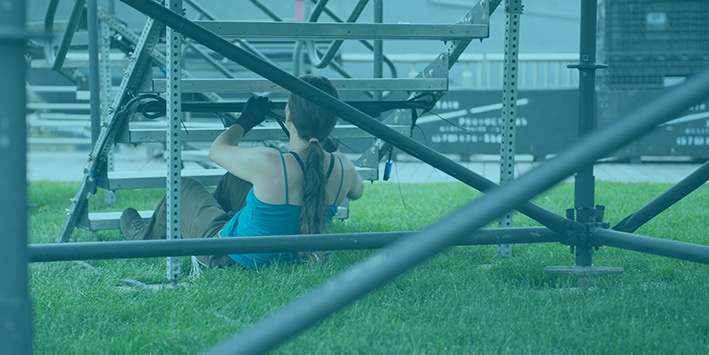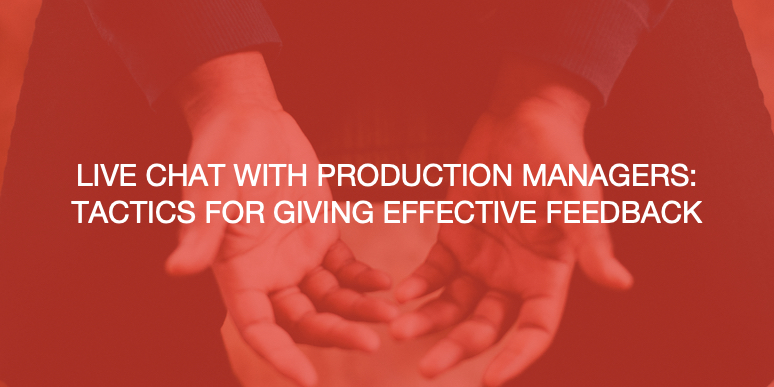
Why do the best event and production managers spend so much time planning? Even after amassing thousands of hours on site? Quite simply because they know they can’t control everything. Years of experience have taught them to be ready for situations that can and will occur, no matter how secure everything seems.
One of the most common elements that event planners battle is the weather. Especially when it turns severe. And there’s nothing that can be done to stop a storm from hitting your event. Whether it’s indoor or outdoor, weather can still have an effect on your show. Indoor, really? Ask anyone who had an event planned in New York City about 3 years ago. You can be sure Hurricane Sandy didn’t discriminate as its flood waters ran through lower Manhattan.
At the annual Event Safety Summit, which concluded December 3rd, president of Lambda Productions, Hadden Hippsley shared some excellent insights into event logistics and the development of severe weather plans. While every event is different, here are some practical ways you can raise your overall level of preparedness.
General Pre-Planning
The easiest way to create and execute well-designed contingency plans is by laying a good foundation. If the basics of your event plan are jumbled or over-engineered, what happens when your team has to deal with the unexpected?
1. Keep it simple
In an emergency, the stress of the moment will raise your adrenaline, making it hard to think through complex situations. Create frameworks that have easy and logical step-by-step sequences.
2. Planning > The Plan
Sometimes the planning process is more important than the plan itself. Planning is your rehearsal time. Going through a myriad of situations leading up to the event will put you in the right head space if and when such a situation arises.
3. Allow Room to Improvise
Emergencies don’t follow a script – your plan should not force you to either. Be ready to improvise.
4. Understand the Importance of Department Interaction
Here’s an example. An incident occurs at a concert in which the safety of a patron has been compromised by severe weather. Security relays incident to operations or medical who must then respond. Rigging needs to lower equipment that audio, video, and lighting are responsible for so as not to cause potential harm to any other attendee. Part of your planning MUST address the communication protocols for these departments. As the event manager, you cannot be everywhere. Your team must know how to interact and execute a contingency as rapidly as possible.
5. Assign the Task Masters and Define the Chain of Command
Hand in hand with department interaction, you must also know who is making the decisions and who is performing the tasks. It’s all well and good to know that the main line arrays get flown in during high winds. But how high must the winds be to trigger this action? Who measures the wind? Who actually brings in the main arrays? Who says when they go back up? What are the conditions in which they go back up? Knowing the answers to these questions can be the difference between life and death in an emergency. How do you keep track of all this information?
6. Write It Down
These questions and many others are often documented on “Trigger Charts.” They are essentially the event production industry’s version of a risk assessment matrix. These tables of information define the precise conditions under which emergency action plans go into effect. They’re often broken down by department or person to outline exactly who is responsible for each task in each situation. This way, there is no confusion in the heat of the moment. The goal is to take the guesswork out of decision making. You want to ensure that when something needs to be addressed, there is no finger pointing or shirking of responsibility.
Considerations for creating severe weather plans
7. Define “Severe Weather” for your event
Remember, every event is different, right? You’ll need to address each of your events within the context of where, when, and how it is being produced. A common weather challenge is high winds. The national weather service defines “high winds” as anything exceeding 58 mph and hail exceeding 1” in diameter. But your event’s threshold for severe weather may be much lower.
-
What are the wind ratings of your structures?
-
Can the structures be modified to make them more wind-resistant?
-
At what exact wind speed do your pre-determined plans and actions go into effect?.
-
Do you have plans for uncommon weather as well? Flooding, for instance?
Very quickly, weather contingency plans can get complicated and extensive. But the goal is not to leave any room for interpretation. Keep it simple, yet be precise.
8. Evacuations
Even more important than knowing what to do with your equipment is knowing how to handle the attendees. You must know where people are supposed to go during an emergency and how long it takes to get there. Your plans should include details about the structural stability of any shelter as well as its capacity.
9. Announcements
You should have several canned messages scripted and ready for common situations but also be ready to create incident-specific messaging on the fly (e.g. directing the audience to a specific exit because the main one is blocked). Have multiple mediums for communication. In emergencies, consider keeping basic PA and video screens operational as long as possible. It makes it much easier to communicate en masse.
10. Train Your Staff
Don’t just make plans and pass them out. Much like putting on a show, everyone involved needs to get the sequences into their bodies and minds so that it won’t be as foreign when the actual emergency occurs. Hold table-top exercises and walk through the required tasks on site. See how long it takes to prepare for severe weather. Is it fast enough? Draw up both general and department-specific emergency procedures. Once you’re on site, hold daily briefings with the crew at the beginning of every day, regardless of the weather conditions. This will make it less stressful on days when there is a potential threat of severe weather.
11. Recover After The Weather has Passed
How long after the weather is passed do you look at resuming? Was anything damaged? Who is in charge of inspections? Consider announcements and procedures to get your audience back into the show.
It’s important to understand that every event has different triggers. Some venues can safely withstand more severe conditions than others. It is the job of everyone on site to prepare. Your job, really, everyone’s job is contingent on the audience attending and leaving safely every time. Being prepared for nature’s most powerful forces is a must for every event.
Event and production managers – how do you plan for bad weather at your events? Share some of your expertise in the comments below.



